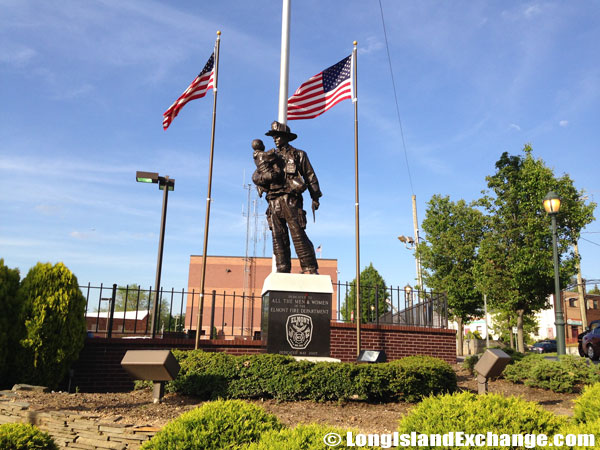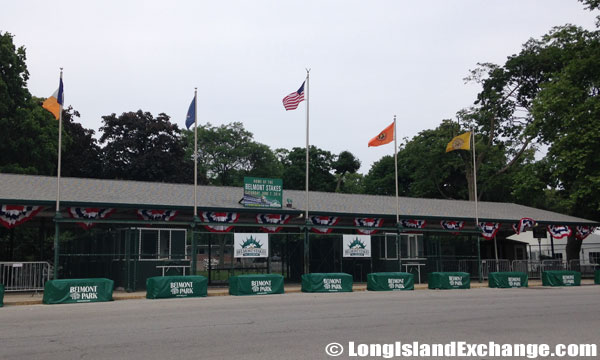 Elmont is a hamlet and census-designated place located in Nassau County, Long Island, New York. It is in the Town of Hempstead. Elmont is near the Nassau County border, thus earning it the name “The Gateway to Long Island“. The area is also a quick access to the Long Island Parkway system.
Elmont is a hamlet and census-designated place located in Nassau County, Long Island, New York. It is in the Town of Hempstead. Elmont is near the Nassau County border, thus earning it the name “The Gateway to Long Island“. The area is also a quick access to the Long Island Parkway system.
As of the 2010 census, there were 33,198 people, 9,847 households, and 7,655 families residing in the CDP. The median income for a household in the CDP was $83,573, and the median income for a family was $94,320. About 35% of Elmont residents report Black or African American ancestry and 20% report West Indian. The latitude of Elmont is 40.700N. The longitude is -73.713W. It is in the Eastern Standard time zone. Elevation is 39 feet.
 The Elmont Memorial Library, on the site of the former Alva T. Stanforth Junior High School at 700 Hempstead Turnpike, opened in September 2006. The library serves a diverse community spanning North Valley Stream, East Franklin Square, and Elmont, including Alden Terrace and Stewart Manor.
The Elmont Memorial Library, on the site of the former Alva T. Stanforth Junior High School at 700 Hempstead Turnpike, opened in September 2006. The library serves a diverse community spanning North Valley Stream, East Franklin Square, and Elmont, including Alden Terrace and Stewart Manor.
 A monument dedicated to world war two veterans.
A monument dedicated to world war two veterans.
 Veterans of Foreign Wars of the United States (VFW), Post 455, Elmont Post, Elmont, New York. 1st & 3rd Fridays 8 pm General Meetings & Social
Veterans of Foreign Wars of the United States (VFW), Post 455, Elmont Post, Elmont, New York. 1st & 3rd Fridays 8 pm General Meetings & Social
 Advent Lutheran Church, Elmont, NY
Advent Lutheran Church, Elmont, NY
In 1650, Christopher and Thomas Foster bought a large plot of land controlled by Dutch settlers with the intention of raising cattle and sheep. They named it “Foster Meadow” which the name would remain for the next 200 years of the village’s history. Few years later, the control of the Dutch colony was shifted to England marking the first regular cultural shift in Foster’s Meadow with the establishment of a community of predominantly English, Protestant farmers and their families.
 Elmont Funeral Home, 1529 Hempstead Turnpike, Elmont
Elmont Funeral Home, 1529 Hempstead Turnpike, Elmont
 Engine Co # 3 of the Elmont Fire Department was organized in May 1924 by a group of neighborhood men who saw a need for a pumper on the East End of town. In 1999 Engine Co # 3 celebrated their 75th Anniversary and responds to over 800 incidents per year.
Engine Co # 3 of the Elmont Fire Department was organized in May 1924 by a group of neighborhood men who saw a need for a pumper on the East End of town. In 1999 Engine Co # 3 celebrated their 75th Anniversary and responds to over 800 incidents per year.
 A memorial honoring the Elmont Fire Department which was established in 1928 and has 7 fire companies and 1 EMS Squad.
A memorial honoring the Elmont Fire Department which was established in 1928 and has 7 fire companies and 1 EMS Squad.
 Elmont Rd +Opp Beth David Cemetery.
Elmont Rd +Opp Beth David Cemetery.
When Long Island was divided into three regions, Kings, Queens and Suffolk Counties; the area was considered a part of Queens County. In the mid-19th century, Foster Meadow experienced its second cultural shift, with the influx of farmers that were largely of German descent and practiced Catholicism. After World-War II, the real estate of the area started to boom with wide-spread development of attractive suburban tract homes. Many of these homes were constructed with a brick-veneer ground story over basement in fluctuations of the cape style to the south and east of Hempstead Turnpike, while older and smaller shingled homes bunch near the racetrack.

The Clara H. Carlson School is the second largest elementary setting in the Elmont Union Free School District, housing approximately 38 classes.
 U.S. Post Office Elmont NY
U.S. Post Office Elmont NY
 War Memorial in Veterans Square, on Hempstead Turnpike.
War Memorial in Veterans Square, on Hempstead Turnpike.
 War Veterans Square, memorial dedicated to Paul J. Muscarella.
War Veterans Square, memorial dedicated to Paul J. Muscarella.
Elmont is served by the Nationally Recognized Blue Ribbon School of Excellence with the Elmont Memorial High School recently was recognized as having the largest percentage of African-American high school students receive a “3” or higher on Advanced Placement tests nationally. The primary school of education is provided by The Elmont Union Free School District. The area is much known for its outstanding education which makes it a great place to raise a family.
 The Belmont Stakes is the third and final leg of the triple crown of horse racing held every June at Belmont Park in Elmont, New York.
The Belmont Stakes is the third and final leg of the triple crown of horse racing held every June at Belmont Park in Elmont, New York.
 Elmont is also home of the famous Belmont Race Track, a major thoroughbred horse racetrack. This New York race track has been around since 1905.
Elmont is also home of the famous Belmont Race Track, a major thoroughbred horse racetrack. This New York race track has been around since 1905.
 Belmont Park takes up 430-acres of the Town of Hempstead in Nassau County.
Belmont Park takes up 430-acres of the Town of Hempstead in Nassau County.
Elmont is also home of the famous Belmont Race Track, a major thoroughbred horse racetrack where wealthy horse owners and their friends from the neighborhood cross all lines. There are also tree-lined streets, parks, old churches and temples, cultural festivals, and fine restaurants to make a lively atmosphere that gives life of the entire area.




